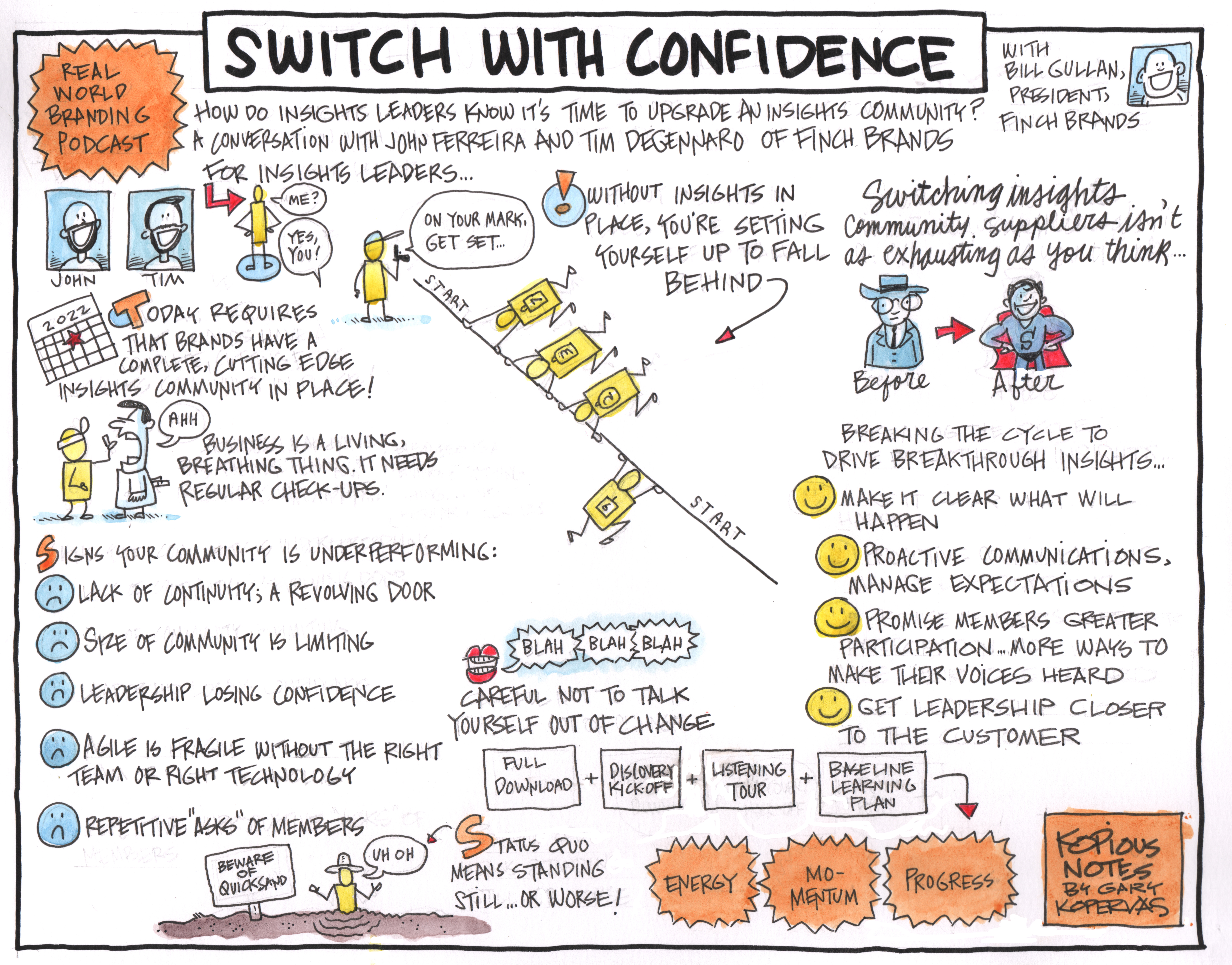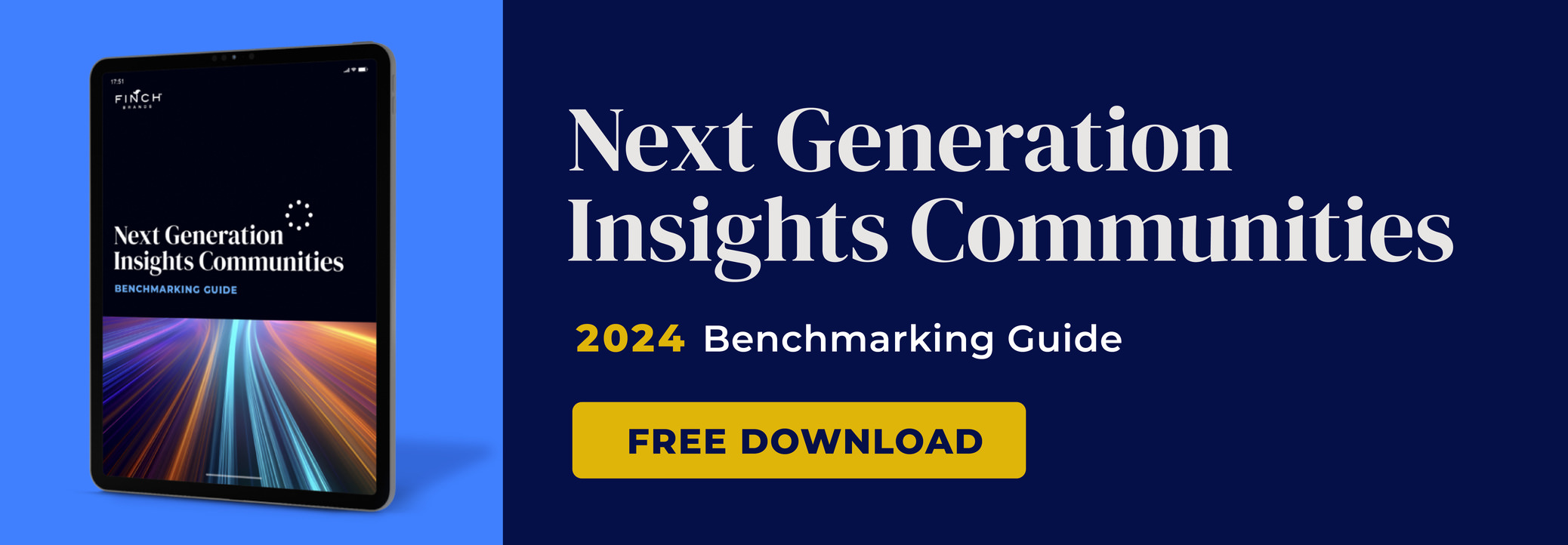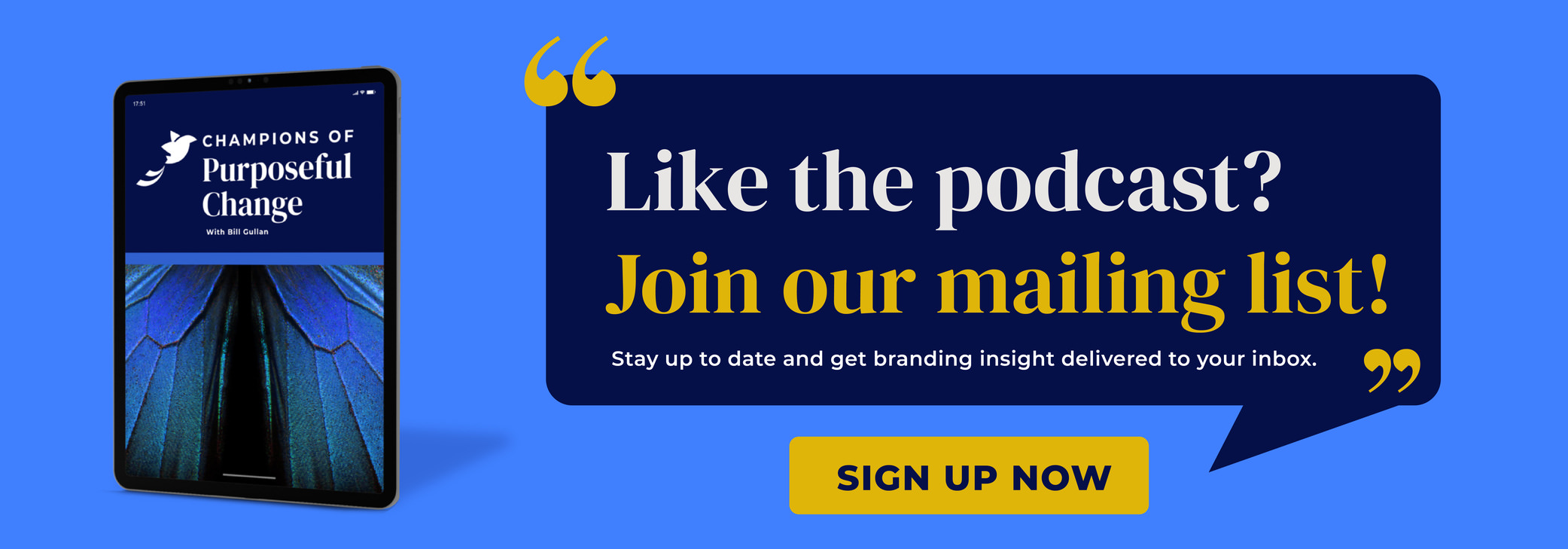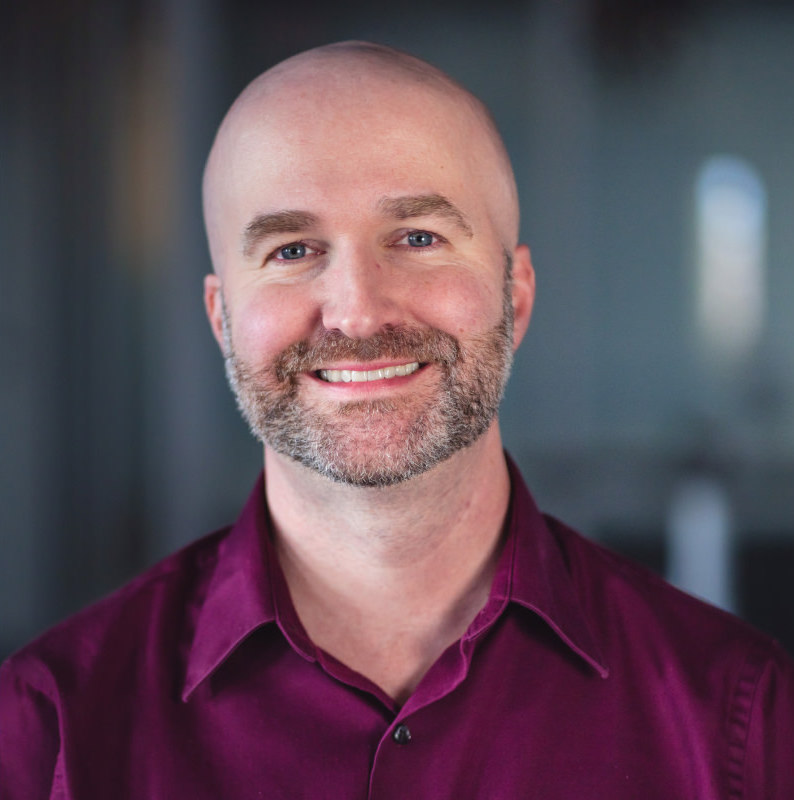10 Signs it’s Time to Upgrade Your Insights Community [Blog & Podcast]

10 Signs It May Be Time To Upgrade Your Insights Community
Frustrated by your insights community platform? You’re not alone
When designed and deployed effectively, insights communities are among the most efficient and effective insights methodologies that a business can deploy to inform critical brand decisions. Insight communities can deliver fast, targeted answers to important questions while maximizing budget efficiency. Unfortunately, there is often a gap between the promise of insights communities and their real-world contributions.
These gaps typically stem from deficiencies in the areas of team support or technology capabilities. In some cases, these gaps become more pronounced over time, creating mounting frustration for internal stakeholders, a “leaky bucket” when it comes to the “bang” you’re receiving for your research investment buck, and ultimately a tarnished reputation for the established insights community.
Have you ever felt frustrated by the limitations of your insights community provider partner or the platform they use? The good news is you have options.
10 signs that it’s to upgrade your insights community partner team:
1. They don’t “get” your business or your brands
There are few areas more frustrating than having an insights partner that doesn’t “get it” when it comes to your business and your brand(s). In my experience, research effectiveness is either accelerated or limited by the level of business and brand understanding that its author possesses. Insights communities, more than any other methodology, are where the quality of your team causes your research to shine or stumble.
That’s because insight communities are “always on” with year-round activity. If you have a weak team on an individual insights project, you can cut your losses. If you have a weak team on your insights community, it can be a daily source of frustration that limits what you’re able to achieve and pushes more work onto your already busy plate.
Questions to ask yourself:
- Does my insights community partner truly understand my business and my brands? If not, is it from a lack of effort, attention, or experience?
- Do I have access to experienced brand and business consultant perspectives?
- For the high stakes’ questions, are there subject matter experts you and your team can tap into without adding extra cost?
2. They struggle to lead the insights conversation and default to order taking
Another common frustration that I hear from insights leaders who oversee insights communities is that they don’t get enough true thought partnership from their insights community providers. Eventually, this devolves from the insights community provider partner taking a back seat to a place where they become “deli counter” style order takers. They do what they’re told but don’t lead the thinking, bring creativity to learning design, or respectfully recommend new ideas when they see a better way.
The best insights community providers are ones that truly understand both quant and qual, including how to create innovative multi-methodology learning plans to inform answers to complicated, high-priority initiatives. They’re also confident enough to assertively surface recommendations on the best ways to tackle your objectives vs. just running down a checklist because that’s the easy thing to do.
Questions to ask yourself:
- Does my team propose creative ways to meet my learning needs, or do they constantly default to me creating direction for the studies we need to do in the community?
- Are they more inclined to think outside the box or check the box?
- Am I getting enough attention from experienced experts on my account?
3. They have a “revolving door” problem when it comes to staffing
One of the biggest frustrations any client-side community lead can experience is constant turnover on their account team. This is a serious issue in the industry, affecting some insights community providers that exist in under-resourced subsidiaries of larger agencies or full-service divisions of providers that are primarily technology companies.
In either scenario, the result can be an under-investment in their front-line insights teams, contributing to high rates of turnover. The impact on clients is that the benefits of expertise building and knowledge preservation, which are so important in insights communities, are never realized.
Questions to ask yourself:
- Does my account team have a lot of turnover?
- What do Glassdoor reviews look like for my insights community partner?
4. They aren’t responsive
Another common complaint I hear from client-side owners of insights communities is that the providers they’re working with are a bottleneck to the agility they expect from a community. In some cases, I’ve even heard that it’s not unusual for emails related to a questionnaire being approved or an activity going live to go unanswered for 48-72 hours with no explanation. Agile is fragile when you don’t have the right team staffed to maximize the potential of the insights community methodology.
Questions to ask yourself:
- How many clients do the team members on my account span at once?
- Some providers will have their researchers span more than 10 accounts at once, making it incredibly difficult for them to stay attuned to your brands and your specific needs.
5. They don’t get the most out of the insights platform
Even if you have a responsive account team with research skills, that may not be enough to fully maximize the potential of the latest insights community technology platforms. The most broadly capable insights teams start with a generalist mindset and turn to internal expert methodological advice and consultation when highly advanced quant or qual is required.
They also stay on top of the latest features being added to the tool to recommend how to solve your insights needs in new ways. If your team is inexperienced or not well-rounded, you may just be scratching the surface of what contemporary insights communities can do.
Questions to ask yourself:
- Are they research specialists or generalists?
- Firms that follow a generalist model are most likely to be able to help you maximize the full breadth of quant and qual tools at your disposal.
- Are they recommending the same types of studies over and over again?
- This may be because they don’t know how to use some of the tools in the community. Be sure to ask what kind of tool and technique training the team receives on an ongoing basis.
In addition to your team, the technology platform you use is a huge factor that propels or constrains the volume and quality of research that you’ll be able to do in an insights community. While communities have been around for a long time, technology in many cases has not kept up. Have you experienced any of these frustrations? If not, it may be time to switch things up and think about changing partners.
6. It limits the number of community members
This was one of my biggest frustrations when I was a client of one of the leading insights community partners at Campbell Soup. Community size was limited to 500 respondents, which meant that by the time I took response rate and brand-level targeting into consideration I would see surveys with sample sizes of n=50 to n=70. I was expected to make major recommendations and decisions that would sway millions of dollars in business results based on tiny pools of respondents that didn’t allow for data cuts, sub-segmentation, or stat testing.
That’s a high-risk formula for any business. A modern insights community technology platform should allow you the flexibility to go into the thousands or even tens of thousands of respondents. Once you have a community of this size, a whole new world of sub-segment targeting and sensitive testing for statistically significant differences opens up in your community.
Questions to ask yourself:
- How big is your average community?
- Are there any constraints to how many community members we can house in our community?
- What types of quantitative research methods can we deploy natively in the community? Do we have a large enough sample to field complex studies?
7. It lacks cutting-edge quantitative and qualitative research tools
When insights communities first launched, they were strictly limited to message board discussions and then grew into simple text-based chats using chat room software. In the years since, innovation in quantitative and qualitative online market research has exploded but many insights community platforms have not kept up. Some leading insight community providers still cobble together newer functionality with one-time plug-ins.
A modern insights community platform should allow for video in-depth interviews and focus groups with the ability to share stimuli and interact with clients in a virtual back room, online journals with video and photo uploads, mobile missions that allow respondents to document an experience in stores or at home, screen-recorded user experience research on desktop and mobile, collage and image safari tools, and message board discussions.
From a quantitative perspective, the survey engine should go beyond the basics, allowing for techniques such as MaxDiff, image heat mapping and annotation, video dial testing with annotation, video capture of open-ended responses, and more. Has your insights community technology platform kept up with the pace of change?
Questions to ask yourself:
- Do I have diverse methodologies at my fingertips for creative exploratory qual?
- Can my community go beyond the basics when it comes to quant techniques?
- As a whole, is my community platform falling behind when it comes to state-of-the-art capabilities?
8. It lacks powerful profiling capabilities
Sometimes frustrations for clients go hand-in-hand with frustrations for respondents. Older insights community platforms often lag behind on realizing the full potential of rich respondent profiling. This means that they lack the ability to store key profile variables used to help you better understand your target audience across studies.
For example, some leading providers need to ask questions like age and gender in every single survey, making it hard to analyze data across studies and contributing to survey length and respondent fatigue. New platforms are able to store these responses as profile variables so you ask them once and it’s stored with it being marked as a variable that doesn’t change, a variable that should be re-asked periodically (like past 6-month purchase), or a variable that should automatically update (like age over time).
For communities built off of client lists, a modern insights community platform should also allow you to append behavioral data/metadata from your internal systems to profiles using a shared ID variable so that you can connect “what” is happening (e.g., website behavior) with “why” it’s happening (e.g., well-crafted primary research).
Questions to ask yourself:
- Is limited profiling affecting the respondent experience in my community?
- Is my insights community platform able to append data if I need that functionality?
9. It is overly complicated to use for DIY market research
Another huge trend in the work of market research is the move toward DIY and hybrid research formats that mix partial service with some DIY. Even if you plan to go with a full-service partner with deep expertise in insights communities, it’s still a good idea to explore whether your internal team is able to gain DIY access to the tool side-by-side with your partner if your needs evolve down the road.
One of the biggest challenges to crossing over that threshold into DIY is mastering the tool. The double-edged sword of having a powerful insights community platform is that it can sometimes mean there is more to learn and it’s harder to master. This is particularly true of platforms that require a lot of 3rd party plug-ins/apps that aren’t natively built into the tool. A powerful insights community platform with tools that are native to the user interface is likely to smooth out your learning curve.
Questions to ask yourself:
- Does my insights community partner allow for side-by-side client service and DIY? If so, how does that work?
- How many of the tools in my insights community platform are plug-ins/apps vs. being natively designed into the user interface?
- What type of training and support does my insights community partner offer if I need to take any tasks in-house in the future?
10. It doesn’t have a steady stream of new features rolling out each year
For many years, one of the biggest issues with leading insights community partners was under-investment in the underlying technology that powers research possibilities. This remains a big issue in cases where platforms are owned or acquired by large branding or research agencies. In those cases, mismatched internal priorities often make it easy to push the innovation roadmap out in the name of boosting short-term profitability.
Over time, this means functionality falls out of step with best-in-class modern-day tools. In contrast, tech-first players that are primarily software companies are more likely to stay current with the latest online market research tools and techniques, though often with the trade-off that they underinvest in their teams and client service.
Questions to ask yourself:
- Have I seen any new tools and techniques become available in the insights community platform over the past 1-2 years?
- Is my insights community partner able to share a concrete innovation roadmap or a history of when different capabilities went live to show the pace of innovation?
We designed FinchSight to address these exact pain points
All of the reasons above are frustrations we hear regularly from client-side researchers who reach out to Finch Brands for help. I experienced these pain points with my own insights community provider when I worked on the client side in consumer insights at Campbell Soup Company. Eliminating these pain points is why we created FinchSight – an insights community offering designed to put research “race car drivers” in “race cars” to help your insights team go further faster.
FinchSight teams are designed to:
- Give you research allies who understand business and grow to understand your business
- Lead the conversation on methodological design based on your objectives
- Provide continuity to preserve knowledge
- Care deeply about outcomes and show it through a responsive partnership
- Get the most out of the technology platform
FinchSight tech is designed to:
- Remove the constraint that communities need to be small and can’t do real quant
- Provide a wide array of contemporary qualitative and quantitative tools
- Allow for powerful profiling to improve analysis and the user experience
- Train your team on how to do DIY if/when you need that flexibility
- Stay future-proofed with the ongoing release of new features at no additional cost
Insight is your edge. Let us help you build yours within your Insights Community.
Are you interested in a new Insights Provider? We’d love to talk with you! Contact us today to schedule a demo and let us explain how we can help you make a smooth transition to an upgraded insights community.
Think the idea of changing your partner to upgrade your insights community is daunting? Check out our blog post on how change is easier than you think.
About the Author
John Ferreira is Chief Insights Officer at Finch Brands, a leading insight-driven brand consultancy. In 2016, John identified the need for a better solution in the insights community space to help solve the pain points he felt when he was a client himself. The result was FinchSight insights communities, which helped Finch Brands grow over 1,000% in the following 5 years by solving real problems for clients. Prior to joining Finch Brands, John spent 11 years at Campbell Soup Company with roles in consumer insights and brand management spanning brands such as Campbell’s Chunky Soup, Prego Italian Sauce, and Swanson Broth.
Switch with Confidence with John Ferreria, Chief Insights Officer, and Tim DeGennaro VP, Insights Communities at Finch Brands

As we frequently note, many companies have built an insights community to provide a continuous, on-demand flow of quantitative and qualitative input from customers and prospects. Yet – for a variety of reasons these initiatives can sometimes fail to make the desired impact or can degrade over time.
Two of Finch Brands’ senior insights leaders – John Ferreira and Tim DeGennaro – joined our podcast to (a) discuss signs that an insights community needs an upgrade and (b) debunk the myth that switching providers/platforms is difficult.
If you like the podcast, please give us a rating! You can now find videos of our podcast recordings on YouTube.
Podcast: Download Subscribe: iTunes | RSS
Transcription:
Bill Gullan:
Greetings, one and all. This is Real-World Branding. I’m Bill Gullan, President of Finch Brands, a premier boutique brand consultancy. Thank you for joining us. Today, I have the distinct honor and pleasure of bringing John Ferreira, Chief Insights Officer, and Tim DeGennaro, VP of Insights Communities, aboard for a focused conversation that is, we know, for insights leaders, which is a portion of our relationship base.
A pretty interesting time. It’s budget season for companies that are at least on a fiscal, a January fiscal, and even those who may not be, there is perhaps a planning orientation as we enter into late Q3 and begin that final home stretch of the year. We’re focusing pretty narrowly today on a topic that we hear for this group is of great import, which is for those who have insights communities in play, first of all, how do you know whether they’re working hard enough for you? And then secondly, for those organizations who may suspect that they’re not, but find the thought of having to switch or switching to be exhausting, which leaves them in a status quo that is imperfect. How can we alleviate some of those concerns? John and Tim are going to address those two points directly. And I really enjoy speaking with both of them, and they’re cherished colleagues. And I know you’ll enjoy hearing from John Ferreira and Tim DeGennaro.
Join today on Real-World Branding by two of my favorite colleagues. I say that to all of them, but these guys are our terrific colleagues and friends, John Ferreira, who’s our Chief Insights Officer and Tim DeGennaro, who’s our VP of Insights Communities. Gentlemen, thank you for joining us once again.
Tim DeGennaro:
Thank you for having me. Great to be here.
Bill Gullan:
It’s a great distinct pleasure, Tim. But our topic today is it’s that time of year, where, for those who are on a calendar fiscal, they’re in budgeting and thinking through what’s working, what isn’t. And I think the conversation here is geared towards folks – and I know there’s many of them, we talk to them all the time – who have insights communities in play, though A, they may not feel like it’s activating its full potential, and B, they wonder about if they were to switch, are they just opening up a process that’s exhausting and more trouble than it’s worth?
We are here to address that. John and Tim, you’ve both been through a lot of switches, and you’ve also, at least in your case, John, been on the client side, thinking through how to make sure that you have the greatest return on insights. Why don’t we start? What are some signs that your insights community may not be working hard enough for you?
John Ferreira:
Yeah, I would say even one step before that, in terms of why this matters and why it’s important. It’s really never been more important than it is today to have a complete and cutting edge insights capabilities.
Bill Gullan:
Yes.
John Ferreira:
With the pace of technological change disrupting almost every industry and companies needing to be closer to consumers and customers that are changing faster than ever because their lives are being affected by all this technology as well, it’s not just business, but it’s the underlying trends in markets that are changing. Having a really reliable, scalable, rapid fire, agile, interconnected insights capabilities to get close to the consumer and the customer and stay close to the consumer and the customer so you can follow the changes as they unfold. It’s never been more important than it is today. And if you don’t have that, you’re probably setting yourself up to fall behind the company.
Bill Gullan:
Certainly at a disadvantage, yes.
John Ferreira:
Insights communities are one really valuable tool to be able to do that, especially if you set it up in the right way, with the right scale and the right audience, you have the right partner, and you have the right technology. Really, one of the reasons our Finch site offering was born, as you mentioned, was we saw that performance was falling short of promise. And there are lots of reasons why. It can be team-related factors of your team not really getting your brands or your business and being able to deliver that high-impact research with high-impact ideas that will impact the business in big ways. Or they may be more in an order-taking mode versus really leading the insights conversation and collaborating to help you get the most out of creative insights methodologies.
In some cases, I experienced team continuity of it was a constant rotating door of people on my accounts, which was then interconnected to a lack of expertise around my brands and my businesses. At times, they weren’t always responsive, and part of that is you’d be surprised how many different accounts sometimes leading insights communities providers can staff their team across. Never really felt like I got the level of focus.
From a technology standpoint, when I was at Campbell’s Soup, it was tiny community. It was 500 people. We couldn’t do really sophisticated or credible quantitative research, which for many executive audiences, you could do the research, but it didn’t really land because it was tiny sample sizes, the tools were falling behind, and just on the whole, it felt like each year that we stood still with the status quo. We were falling behind a little bit.
We designed Finch to address all those different pain points. Each year that I was there, we talked ourselves out of change, because change feels big. Change feels scary. Change feels like it’s more than you might be able to handle, especially in general. And thinking about changing your insights community, where the status quo is the easy decision, but looking back, we left something on the table by not upgrading and not really not being able to find the right partner, I guess, to be able to answer and address some of those pain points in a way that we were confident.
Bill Gullan:
Yeah. So let’s summarize a couple of these things. You may need to seek something new if some of the things you mentioned, John, and when you say team in this case, you mean the team and the supplier.
John Ferreira:
Yeah.
Bill Gullan:
If there was a revolving door of people, and you’re deprived of the continuity that is required to really get it, that’s one. Another sounds like if the size and structure of the community limits you methodologically. Another sounds like if the internal reaction to research is a polite smile rather than something greater and a connection of insights to action. If you sense some degree of lethargy or exhaustion amongst your stakeholders, your colleagues stakeholders, in terms of the power of insights.
Are there a couple of… You had a long and very substantive answer, but are there a couple of conditions that an insights lead may be able to identify as being indicative of a need to think differently?
John Ferreira:
One of the biggest signs is if your community’s losing credibility internally.
Bill Gullan:
Internally.
John Ferreira:
And that can be a slip slide over time. But you’re not getting the same level of executive attention with brand leadership or insights leadership. Maybe you’re presenting a certain set of data, insights, and recommendations, and they don’t take your recos, and they jjust decide to go with their gut instead.
These are things that can happen within insights and research in general. But if they’re happening with any sort of frequency, that’s definitely the thermometer there, I think, for whether you need change. And overall, just your own… If you’re leading the community, your overall sense of satisfaction or frustration. Is your partner really delivering for you? Are they bringing that eye-to-eye, peer-to-peer level intelligent conversation, bringing the fresh ideas, helping you go further faster? Or is it a grind, and are they not bringing the thinking, or not helping you move fast enough?
I like to say agile is fragile if you don’t have the right team in place or the technology to pull it off. And having the tech’s not enough. You have to have the team that knows how to use it.
Bill Gullan:
No doubt. Tim, let’s bring you in because there’s other things that we’ve heard, horror stories from clients, particularly about the community itself. John’s highlighted a number of externalities that ultimately relate to community impact within the community. I know that we take engagement, for example, very seriously. And sometimes communities die on the vine simply because members are disengaged. Are there signs of an unhealthy or unproductive community that we can diagnose?
Tim DeGennaro:
Yeah. I think number one, a lot of it ties back to technology and how easy you’re making it for your members to be part of your community.
I know from some past history, we used to have to ask our community members, every single survey, if they were a male, a female. I don’t know. What was their household income? And we’d get complaints all the time from community members of, “How do you not know that?”
That is a good question. How did we not know that? When the technology doesn’t keep up with the ease of use that not only the members in the community expect, but also the deliverers of the community offering expect and their clients. “How come we couldn’t do a survey where half the survey went to people within this income bracket and the other half went to that survey without asking them their income all over again, every time?” That kind of thing.
If we haven’t caught up with the way we can now do very rich profiling with our members, so that we don’t have to annoy them with these constant questions can really drive engagement down as well as the ability to have a variety of types of activities within the communities. People don’t want to take 20-minute surveys all the time. They don’t even want to take 5-minute surveys all the time. They want a break. They want to be sent to a store. They want to get on camera. They want to draw. Having those kinds of capabilities in a community to offer people more interesting ways of expressing themselves and their really amazing ideas is another sign. If those things are not built in and part of the community and easy to deploy and easy for the member to take part in, you’re going to see engagement and the learnings that you get from those community members suffer.
Bill Gullan:
Right. And both of those are great examples that seem to spring, on one hand, from limitations of technology, other suppliers’ limitations of technology, and also other suppliers’ limitations on imagination, when it comes to methodologies that not only yield really interesting learnings, breakthrough learnings, but also engage members in the process.
Tim DeGennaro:
Yep.
Bill Gullan:
All right, hopefully listeners are not seeing themselves in this, although I guess there’s opportunity for us if they are. But hopefully for their sake, these are not conditions that they’re observing. But let’s say they are, and John, as you said, you were early in your career just like, “God, it was… Yeah, it’s not perfect, but it’s exhausting to even think about switching. It’ll be hard. Something won’t work.” Probably isn’t actually that hard, is it? Because we’ve done a lot of it. Any guidance you can provide on it’s easier than you think.
John Ferreira:
Yeah. Just to start that thought off, status quo is the easy choice, and it may seem like changing is going to be a lot of work, or it’s a risk. But in fact, the bigger risk, if you feel and know in your gut that your community and your partner are not delivering at the level that you need, is to do the status quo and stand still. It’s a risk to your brands and the businesses behind them. It’s even a risk to your personal brand.
Having been on the client side, I know that the insights leaders, at whatever levels of the organization, as they continue to work up the ladder, are the ones that send strong signals that they’re staying on the cutting edge. They’re upgrading the capabilities. The team, more than likely, is smaller than it was last year because things need to get more efficient, the budgets might be smaller. But how do you find those upgrades and show that you’re getting leadership closer to the consumer and customer than ever?
The bigger risk is actually standing still, from my point of view. Even the act of upgrading and doing an internal round of listening with brand leaders and doing a road show on, “Here are the new capabilities, and here are new ways we’re going to be able to answer questions you’ve had for a while. Here’s a new team that’s going to bring a higher level of strategic thinking into the equation to help us solve our problems.” Creating that dialogue is a commercial for your internal insights team and showing that you are progressive, you’re making waves, and you’re going to make a bigger impact.
Bill Gullan:
- Are there, Tim, certain techniques that we’ve employed around transition-?
Tim DeGennaro:
Yeah.
Bill Gullan:
That make it not painless, that make it high potential. What are some of the rudiments that are required to make a switch work and make it positive? It’s not just about the procurement and legal contracting hell, but in terms of the workflow, what are some things that we can do to make it better?
Tim DeGennaro:
Well, I think you start by making it clear what’s going to happen, and I think both to your community members, but also just to yourself. I think that’s the biggest barrier or the most scary part is that a lot of clients that we’ve had perhaps have never been inside of the community that they are transitioning. They don’t know how it works from a technical standpoint. And now they are fearful that they’re going to be asked to be technical experts. The truth is it’s not that. It’s very simple, and any partner worth their salt will be part of those conversations with both your team as well as your existing community partner. We can talk.
I think the other is that… The first time I did this, I did a transition, I thought that it was going to be this incredibly complicated transfer of data. There was going to be some special button that members needed to push to go from one community to another. And it really is not that. Once I realized how simple it is, it made things so much easier as a deliverer, which is all it is. It’s like importing contacts.
If you were to go sign into Gmail for the first time, it’s going to ask you, “Do you want to import your contacts from Outlook?” And you say, “Yes.” And it does that. And it brings in an email address. It brings in a name. It brings in some notes you may have about this person.
That’s all we’re doing. We’re taking a list from one database and putting it in ours. And it’s that simple. Of course, there’s some transfers of information and things like that. But at the end of the day, that’s really all it is. It’s pretty simple.
I think communicating to your members ahead of time what is going to happen and when it’s going happen is key. And that’s something that you might start a month in advance with your members. You want to explain to them that in this new environment, there’s going to be new opportunities to participate, more ways to earn, if you’re doing points or sweepstakes or things like that, more ways for your voice to be heard. And there’s a big fear too, that those engaged members are no longer going to be engaged in the new community. But the reality is anyone who was engaged to begin with, vast majority of them stay engaged.
Bill Gullan:
Right. So those who are worried about the wasted investment in recruiting and engagement should maybe worry a little less about that. Our track record suggests that productive members port over at very high percentages, if it’s well managed. Okay.
Tim DeGennaro:
Yep.
Bill Gullan:
So those are some good functional and technical myth-busting items. John, you said from the beginning, John, the importance of team. What about the insights person who feels like, “God, I’ve invested a lot in the team, meaning the supplier team that I work with, how could someone new get it quickly enough to add value to the business? It feels like starting over. It feels like wasted motion.” What would you say? Are there certain things that we do at Finch that are designed to really quickly immerse in the learning objectives of our clients and to get up to speed quickly?
John Ferreira:
Yeah. Well, even in just the process, even before signing contracts, we look to understand their brands and businesses as deeply as possible. We provide examples of it’s, “Hey, give us real-world examples of questions that you’re trying to answer.” And we give them, “Okay, here’s exactly how we would go about tackling that in a community context in particular, quantitatively qualitatively. Here’s a three-part multi-phase learning plan for how we would go about addressing that.”
Once we get started and decide to partner together, we do a full download of important strategic decks, annual operating plans, lessons learned, key historical research studies. Pretty quick on the uptake, so there’s a study hall step for us to be able to get smart in the business quickly. We have a discovery kickoff meeting with the client, which is often, we’re told, very helpful to clients to clarify their own strategy in taking the brands and thinking about it from a period of time in the future, looking back. We call it a future-cast of, “Imagine there’s a story being written by the brand. About the brand, what’s the headline? Where is this appearing? What are the supporting points that tell the story and how it unfolds?”
We unpack key business questions of the moment as well as key hypotheses for different brands that need to be addressed. Oftentimes, for a large company, there can be a little bit of a listening tour cross-functionally to get all the questions that people have out. We take all this fuel, we create a baseline learning plan, and then that’s a living, breathing thing week to week, week in, week out, with our teams, keeping track of all the studies that are prioritized as well as ones that are in the bullpen for when we want to get those into the mix. And that plan is constantly being reworked.
Typically, we’ll have quarterly check-ins with whatever leadership stakeholders make sense to keep them informed and all the things we’ve studied – creative studies, the impact that the studies have had on brands – and then download what are the latest questions on their minds to be able to inform and refine the next three months and what that can look like, because business is a living, breathing thing. Companies are living, breathing things, and your learning plan needs to act accordingly. Trying to get out of the week to week Whac-A-Mole and take a macro level and a micro level view, to keep everything current.
Bill Gullan:
You mentioned the listening tour. I know one of the things, because I really enjoy this part of the process and being involved in it. You referenced earlier the fact that internal insights teams, either individuals or departments, may find their brand tarnished a little bit by communities that haven’t kept up. That listening tour not only helps us download really important information and business objectives from key stakeholders; to some degree, it also serves, I think, to energize the departmental and/or personal brand of insights leads, because it creates executive relationships for us that are positive and that provides some momentum and a sense of progress and energy, I would think, around the community offering.
John Ferreira:
Without a doubt. It definitely… We see it consistently energizes the network of stakeholders, brand leadership, other functional leaders, and Finch Brands can be as front-of-stage or back-of-stage as needed, in the spotlight where our clients need it or the supporting actor with helping our insights partner shine all throughout the process.
Bill Gullan:
Excellent. Why don’t we leave it there? I know you guys need to run, and I know that both of you have applied some thinking to a couple of printed assets that cover these topics. I think there’s one that we’re working on – maybe we’ll be published by the time this goes live – about signs that the community may not be as productive as it could be or as progressive as it could be. The other one is about some of the key elements in a transition and how they are managed and how the overall transition can be positive as opposed to exhausting, hopeful as opposed to concerning, all of those things.
John and Tim, as always, thank you for your time and your insight.
John Ferreira:
Great to be here. Thank you.
Tim DeGennaro:
Thanks for having us.
Bill Gullan:
Have a good day, guys.
Many thanks, as always, to John and Tim for their insight. They’ve both been around the block, so to speak, on this. John mentioned his experience as a consumer of insights communities while at Campbell’s Soup. Tim has been a pioneer in the community space for probably about a decade now. Hopefully, they’ve allayed any fears that one might have about how difficult it may be to transition, if that is in fact the right thing for our insights contact.
So, hope you’ve enjoyed this. And if you have, there’s a multiplicity of ways to support us. First of all, if this content touches you because it connects with something that you’re thinking or feeling in the moment, and you’d like to talk further about this informally, as a friend, or more formally to see what Finch might be able to do to help you progress, please reach out to me at billgullan or bgullan@finchbrands.com.
But in terms of the podcast, free ways to support us, click subscribe in the podcast app of your choice. Make sure you do not miss a single episode. Rate and review within the same app to help others find us. And keep the dialogue going more generally on Twitter @billgullan. Thoughts, ideas, critiques, too, anything that’s on your mind. We want this to be valuable to our audience, and we’re grateful for your time that you spend with us when we put one of these into the ether. So we’ll sign off from the Cradle of Liberty.








